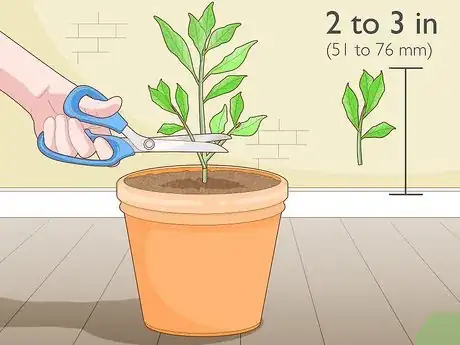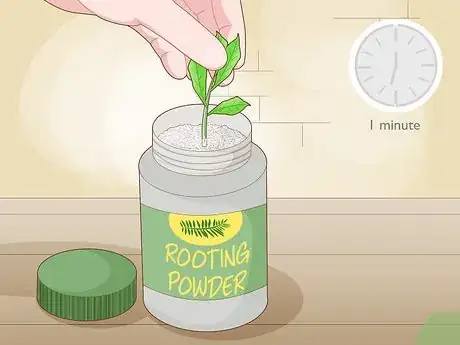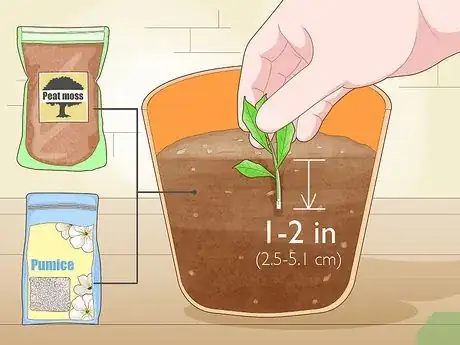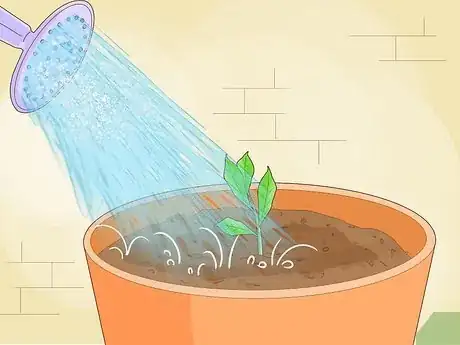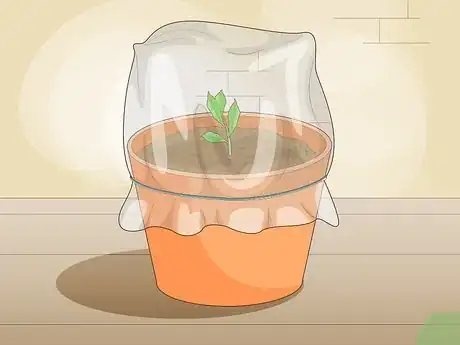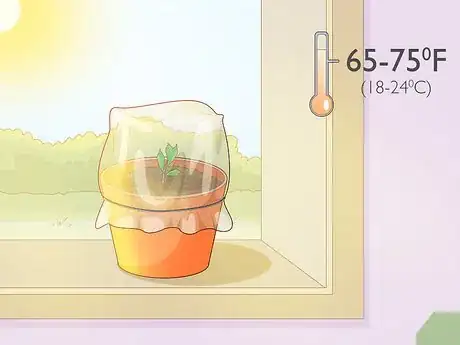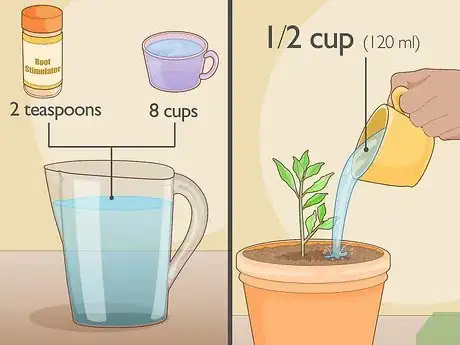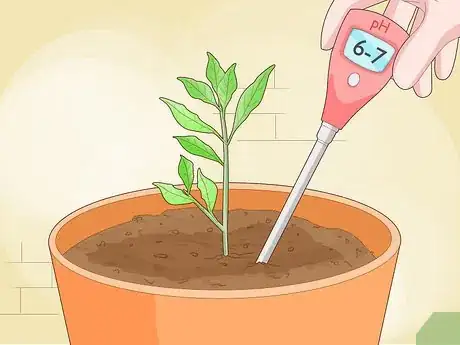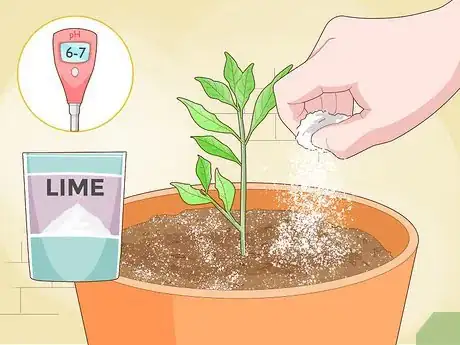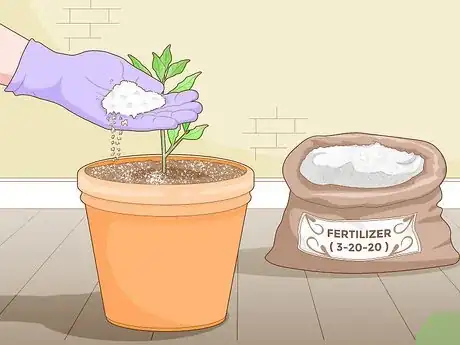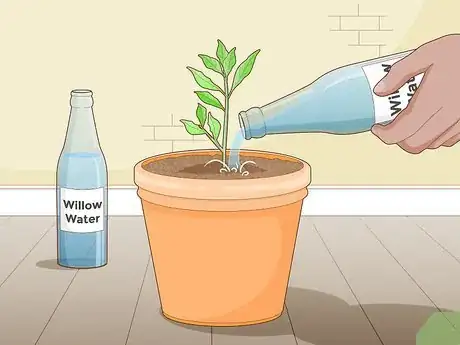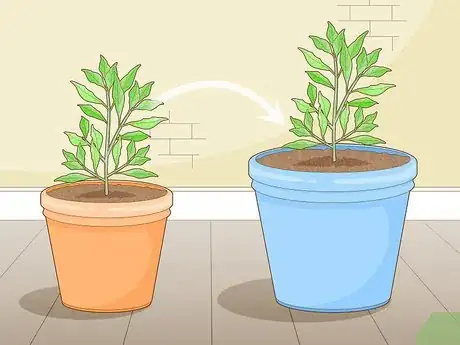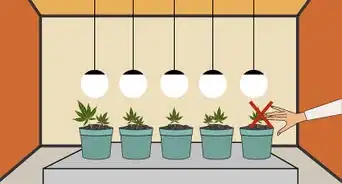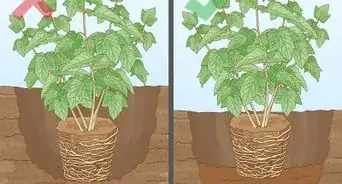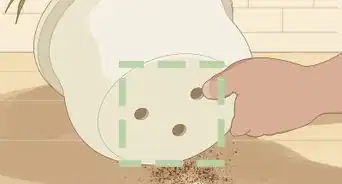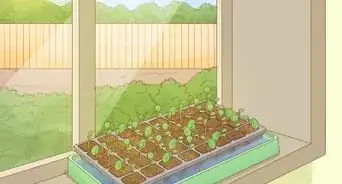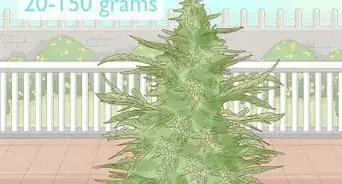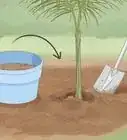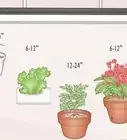This article was co-authored by Chai Saechao and by wikiHow staff writer, Jessica Gibson. Chai Saechao is the Founder and Owner of Plant Therapy, an indoor-plant store founded in 2018 based in San Francisco, California. As a self-described plant doctor, he believes in the therapeutic power of plants, hoping to keep sharing his love of plants with anyone willing to listen and learn.
There are 10 references cited in this article, which can be found at the bottom of the page.
This article has been viewed 26,592 times.
One of the best ways to help your plants grow strong is to support their root systems. A healthy root system prevents erosion around the plant, delivers nutrients to help the plant grow, and protects the plant from disease. One way to promote root growth is to apply a rooting powder to cuttings before you plant them to give them a good start. In addition, you can stimulate root growth in established plants by making sure the soil has all the nutrients it needs. With the right soil and water, you can trigger healthy root growth in all of your plants.
Steps
Encouraging Growth in Cuttings
-
1Take a 2 to 3 in (51 to 76 mm) cutting from a healthy plant. Give your cutting the best chance of putting on growth by selecting a healthy plant to cut. If you're propagating a leafy plant, include several leaves since these will give the plant nutrients. If you're propagating a plant that doesn't have leaves, cut a 2 to 3 in (5.1 to 7.6 cm) piece of branch from a healthy part of the plant.[1]
- Propagating means multiplying a plant using an existing piece of the plant. Propagating cuttings allows a new plant to grow roots faster than if you grow them from seeds.
-
2Dip the end of the cutting in a small container of rooting powder. Pour a little of your rooting powder into a small container. Take your cutting and dip its stem end in water, then press the wet end of the stem into the small container of rooting powder. Let the stem dry for 1 minute before shaking off the excess powder.[2]
- Using separate containers of powder for the cuttings prevents the spread of disease between the plants.
- You can buy rooting powder from most lawn and garden centers. Some products are sold as gels, so you may not need to dip the cutting's stem in water first.
Did You Know? Rooting powder contains the same hormones as the plant which helps the plant grow roots faster. Some powders also contain fungicides that protect the plant from disease as it establishes roots.
Advertisement -
3Push the cutting into a peat and pumice mixture. Get out a container that has drainage holes in the bottom and fill it with a propagation mixture made of equal parts peat and pumice. This light mixture allows oxygen and water to circulate around the developing roots. Insert 1 to 2 inches (2.5 to 5.1 cm) of the cutting into the mixture.[3]
- Purchase a simple propagation mixture or make it at home.
- Good drainage is important for root growth. If the soil becomes waterlogged, the roots will rot instead of thriving.
-
4Water the mixture around the cutting to stimulate root growth. Mist the peat and pumice mixture until it's damp. The water encourages the roots to begin growing. Remember to check the mixture every few days and mist it whenever it feels dry.[4]
-
5Wrap a plastic bag around the cutting in the pot to prevent it from drying out. If too much moisture escapes from the mixture in the cutting container, the cutting could dry up. Trap moisture by placing the cutting container in a plastic bag and loosely tie it closed.[5]
- Insert a few sticks into the soil to keep the bag from touching the cutting.
- The evaporating moisture is trapped by the bag. This creates a humid environment that nourishes the cutting.
-
6Place the cutting in an area with bright light. The cutting uses photosynthesis to turn light into energy for growing its roots. Put the cutting somewhere where it will get bright light, but not direct sunlight. Keep in mind that if you're propagating a cutting that doesn't have leaves, such as a hardwood plant, it will get energy from its woody stem instead of from leaves.[6]
- Ensure that the temperature where you keep the cutting is between 65 and 75 °F (18 and 24 °C) to prevent the cutting from drying up. If the area is too cold, buy a heating mat that you can place under the cutting container.
Stimulating Plant or Tree Roots
-
1Apply a root stimulator when you plant the tree or shrub. Give the root system extra nutrients that nourish the roots. Buy a root stimulator that contains auxins, gibberellic acids, or vitamin B. Then, dissolve about 2 teaspoons (8 g) of the stimulator in 8 cups (1.9 L) of water. Use about 1⁄2 cup (120 ml) of the solution when you initially water each plant.[7]
- Once the plant is in the ground, you can hydrate it with plain water or willow water.
-
2Do a soil test to learn about the health of the soil around the plant. If your plant isn't putting on as much growth as you like, its roots may not be getting adequate nutrients from the soil. Buy a soil-testing kit from your local garden supply store and follow the manufacturer's instructions.[8]
- Read the results for pH, phosphorus, and potassium, since they're vital for healthy root growth.
-
3Adjust the pH of the soil so it's between 6 and 7. If your soil's pH is below 6, it's too acidic for your plants, while a soil pH level over 7.5 is too alkaline for the plants. To increase the pH level, mix a liming agent or wood ash into the soil. To reduce the pH level, add sulfur or aluminum sulfate to the soil.
- If the soil's pH isn't between 6 and 7, it's difficult for the plant to access the phosphate in the soil. Phosphate is important for putting on new root growth and strengthening the current root system.
-
4Spread fertilizer that's high in phosphorus or potassium. If your soil sample shows there's an imbalance of phosphorus or potassium, your plants might not be able to grow strong roots. Buy a fertilizer that encourages growth and protects the roots from stress. Look for a fertilizer that contains more phosphorus and potassium than nitrogen and work the fertilizer into the soil around the plant.[9]
- For example, choose a 3-20-20, which is higher in phosphorus and potassium than nitrogen.
-
5Water the plants with willow water to encourage root growth. Willow branches contain salicylic acid and indolebutyric acid, which stimulate growth. To help your plants' roots grow, put about 2 cups (400 g) of chopped, thin willow branches into a large jar or bowl. Pour in 8 cups (1.9 L) of boiling water and leave the willow water to steep at room temperature for 24 to 48 hours.[10]
- Strain the willow pieces out before using the willow water twice a week on your plants. Store the leftover willow water in the refrigerator for up to 2 months.
-
6Move potted plants to larger pots. Your plants' roots may be growing slowly if they're in pots that are too small for their root system.[11] Transplant the plants to pots that are 2 times larger than the current pots. Having more space in the pot can help the root systems grow up to 40% larger.[12]
- Remember to move the plants to pots that have drainage holes in the bottom. The holes prevent water from becoming trapped near the roots, which could cause them to rot.
Expert Q&A
-
QuestionWhat does it mean if the roots start sticking out of the soil?
 Chai SaechaoChai Saechao is the Founder and Owner of Plant Therapy, an indoor-plant store founded in 2018 based in San Francisco, California. As a self-described plant doctor, he believes in the therapeutic power of plants, hoping to keep sharing his love of plants with anyone willing to listen and learn.
Chai SaechaoChai Saechao is the Founder and Owner of Plant Therapy, an indoor-plant store founded in 2018 based in San Francisco, California. As a self-described plant doctor, he believes in the therapeutic power of plants, hoping to keep sharing his love of plants with anyone willing to listen and learn.
Plant Specialist This is a sign that your plant is way too big for the container that it's currently in. Roots need a lot of space to spread out and grow, so it's time to transfer your plant to a bigger pot or planter!
This is a sign that your plant is way too big for the container that it's currently in. Roots need a lot of space to spread out and grow, so it's time to transfer your plant to a bigger pot or planter!
References
- ↑ https://www.purdue.edu/hla/sites/yardandgarden/extpub/new-plants-from-cuttings-text-only/
- ↑ https://buffalo-niagaragardening.com/2011/03/22/5-great-tips-for-starting-new-plants-from-cuttings/
- ↑ https://youtu.be/8UBOMh5WbTo?t=1297
- ↑ https://www.missouribotanicalgarden.org/gardens-gardening/your-garden/help-for-the-home-gardener/advice-tips-resources/gardening-help-faqs/questionid/184/afmid/4462.aspx
- ↑ https://www.purdue.edu/hla/sites/yardandgarden/extpub/new-plants-from-cuttings-text-only/
- ↑ https://www.purdue.edu/hla/sites/yardandgarden/extpub/new-plants-from-cuttings-text-only/
- ↑ https://youtu.be/plQjJBkg0Ng?t=77
- ↑ https://www.finegardening.com/article/soil-testing-is-worth-the-effort
- ↑ https://www.ncbi.nlm.nih.gov/pmc/articles/PMC6843428/
- ↑ https://www.citruscollege.edu/stem/summerresearch/Documents/Posters/2013/WillowWater.pdf
- ↑ Chai Saechao. Plant Specialist. Expert Interview. 20 February 2019.
- ↑ https://www.sciencedaily.com/releases/2012/07/120701191636.htm
